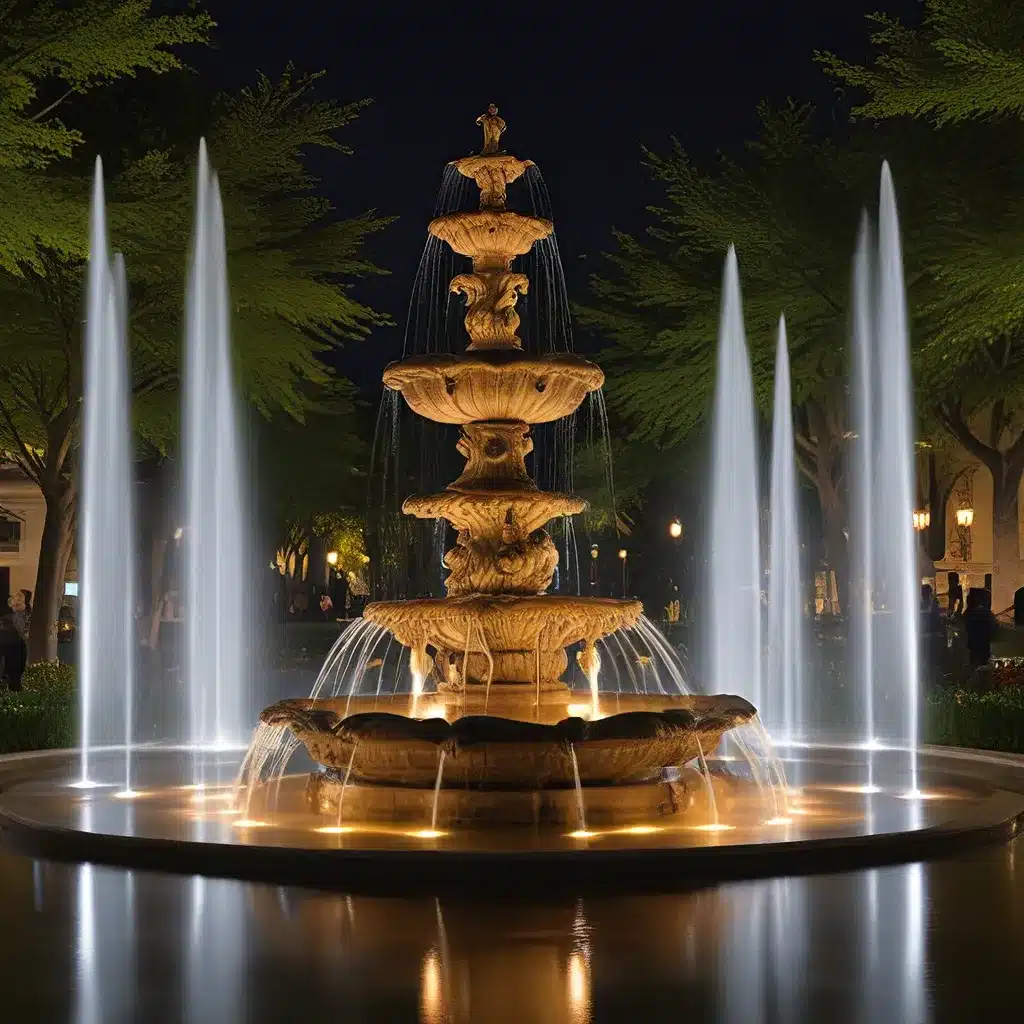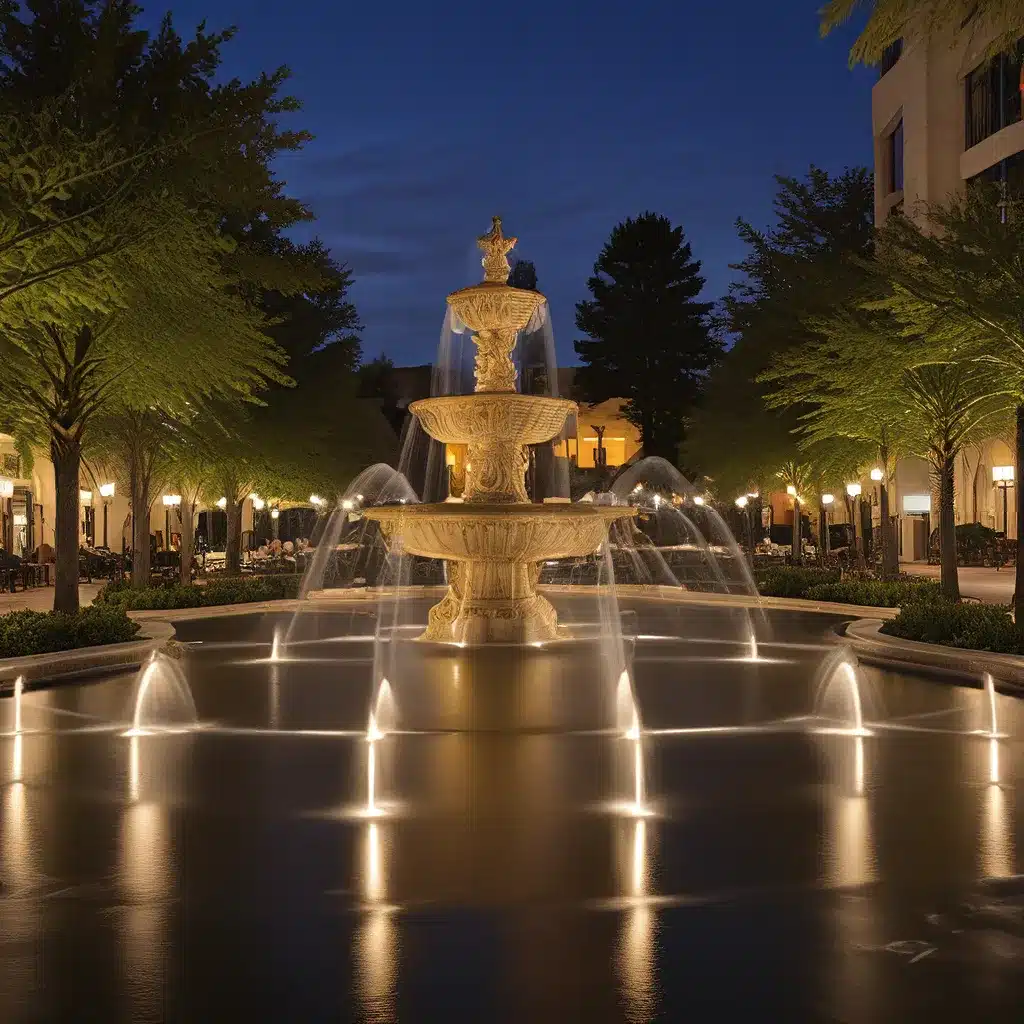
Fountain Design Essentials – Welcome to Fountain Lights
Fountain Design Essentials – Welcome to Fountain Lights

As I delve into the fascinating world of fountain lighting, I can’t help but marvel at the remarkable innovations that emerged from the Golden Age of Muslim Civilization. During this remarkable period, from the 7th to the 13th century, the Muslim world was a hub of groundbreaking scientific and technological advancements that laid the foundation for many of the modern marvels we enjoy today.
One of the standout areas of innovation was in the field of hydraulic engineering. Ingenious scholars and inventors like Al-Jazari and the Banu Musa brothers pushed the boundaries of what was possible, creating a dazzling array of water-powered machines that would have left onlookers in awe. These devices, ranging from sophisticated water-raising mechanisms to automated fountains, not only served practical purposes but also captivated the senses with their sheer elegance and mechanical complexity.
1001 Inventions has been a treasure trove of information, shedding light on the remarkable achievements of this era. Through their research, I’ve discovered that the Muslim world’s mastery of hydraulics and mechanical engineering had a profound impact that continues to reverberate through the ages.
One of the most impressive feats of hydraulic engineering from the Golden Age was the development of advanced water-raising machines. Al-Jazari, a renowned polymath and prolific inventor, is credited with designing a remarkable array of these devices, each showcasing his ingenious grasp of mechanics and fluid dynamics.
One of Al-Jazari’s most innovative creations was his reciprocating pump, which featured the first-ever illustration of a crank in a manuscript. This groundbreaking design allowed for the conversion of rotary motion into a reciprocating action, a fundamental principle that would later revolutionize the development of steam engines and internal combustion engines.
According to scholars, Al-Jazari’s reciprocating pump could be considered the origin of the suction pump, a technological leap that was previously credited to Renaissance engineers in Europe. This remarkable discovery suggests that the Muslim civilization’s mastery of hydraulics and mechanics predated and influenced the advancements of the Western world.
But Al-Jazari’s innovations didn’t stop there. He also designed a six-cylinder monobloc piston pump that included cutting-edge components like a camshaft, cylinder block, and non-return valves – features often associated with modern technology. Experts who have studied this remarkable machine have concluded that the engineers of the Muslim tradition, represented by Al-Jazari, had a profound understanding of kinematics, dynamics, and fluid mechanics.
These water-raising devices were not mere curiosities; they played a vital role in the agricultural revolution that transformed the Muslim world. By harnessing the power of water, engineers and farmers were able to improve irrigation techniques, expand crop cultivation, and make fresh food more widely available. The impact of these advancements was truly transformative, laying the groundwork for a more prosperous and sustainable future.
While the practical applications of hydraulic machinery were undoubtedly impressive, the Muslim world also showcased a remarkable ability to blend function with aesthetics and entertainment. The Banu Musa brothers, another renowned group of scholars and inventors, were renowned for their creation of captivating automated fountains.
One of their most mesmerizing inventions was the Self-Changing Fountain, a device that could alter its water flow and patterns in a mesmerizing display. Powered by a complex system of gears, levers, and valves, this fountain could seamlessly transition between different water patterns, delighting onlookers with its enchanting performance.
But the Banu Musa brothers didn’t stop there. They also designed a Hydraulic Organ, an ingenious device that used the flow of water to produce musical tones, and a Wudu Ablution Water Machine, which automated the ritual cleansing process. These inventions not only served practical purposes but also showcased the creative ingenuity of the Muslim world, blending form and function in ways that would have captivated and amazed their contemporaries.
The marvels of the Muslim world’s hydraulic engineering were not limited to water-powered devices. They also made groundbreaking strides in harnessing the power of wind through the development of advanced windmill technology.
Contrary to popular belief, the history of windmills can be traced back to the Muslim world, with evidence suggesting that the first known windmills were developed in the regions of Seistan and Iran. These early windmills had a vertical design, a stark contrast to the traditional European horizontal windmills that would later emerge.
The impact of these Muslim-developed windmills cannot be overstated. As the technology spread westward, it ultimately influenced and inspired the design of the European windmills that became more widespread in the 16th century. This transmission of knowledge and innovation is a testament to the interconnectedness of the Muslim world and its influence on global technological advancements.
Moreover, the large-scale use of windmills across the Muslim civilization highlights their pragmatic approach to harnessing renewable energy sources. These wind-powered machines were not just employed for grinding grain but also for pumping water and powering various agricultural and industrial processes – a testament to their remarkable versatility and foresight.
As I delve deeper into the remarkable achievements of the Muslim world during the Golden Age, I’m struck by the profound and lasting impact of their hydraulic engineering innovations. From sophisticated water-raising machines to captivating automated fountains and pioneering windmill technology, these advancements have left an indelible mark on the course of human history.
The crank-and-connecting-rod system developed by Al-Jazari, for instance, is a prime example of how the Muslim world’s mechanical ingenuity paved the way for groundbreaking inventions like steam engines and internal combustion engines. Similarly, the suction pump and the monobloc piston pump designed by these prolific inventors showcased their mastery of fluid dynamics and kinematics, foreshadowing the advancements that would come centuries later.
But the impact of these innovations extends beyond the realm of pure technology. The agricultural revolution spurred by the Muslim world’s hydraulic engineering had far-reaching implications, improving irrigation, increasing crop yields, and making fresh food more accessible to the masses. This, in turn, contributed to the economic and cultural prosperity that characterized the Golden Age, setting the stage for the diffusion of knowledge and the cross-pollination of ideas across civilizations.
As I ponder the legacy of the Muslim world’s hydraulic innovations, I can’t help but feel a deep sense of awe and admiration. These remarkable achievements not only pushed the boundaries of what was possible but also served as a testament to the ingenuity, creativity, and forward-thinking of the scholars and inventors who flourished during this golden era.
And when it comes to the world of fountain lighting, I can’t help but wonder how these ancient advancements might inspire and inform the design and functionality of modern systems. After all, the elegant fusion of form and function that defined the hydraulic marvels of the Muslim world is precisely the kind of vision that can elevate the art of fountain lighting to new heights of beauty and wonder.
So as I continue my exploration of this fascinating topic, I’m filled with a profound sense of curiosity and excitement. Who knows what other hidden gems of innovation and brilliance might be unearthed from the rich tapestry of the Muslim world’s scientific and technological legacy? The possibilities are as endless as the flowing waters that powered their remarkable creations.
Share to :
Subscribe to our newsletter for the latest in fountain design, innovative lighting ideas, and exclusive tips straight to your inbox. Join the community shaping the future of water features.

Rapid delivery to your doorstep.

Excellence in every product.

Great value for your investment.

Assistance at any hour.
Fountain Lights — Illuminating creativity in every splash!
Copyright © 2023. All Right Reserved